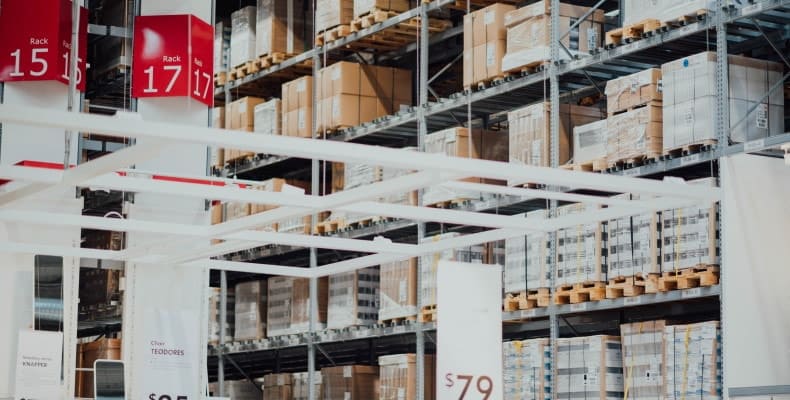With technology and communications become smarter, faster, and easier, globalisation is a great option for your business to broaden your product offerings, market and industry.
Global trade allows your company to offer the latest innovations in the products and services you sell achieving competitive advantages, business growth and expansion.
Importing and exporting also, enables your business to engage in global supply chains to maximise your efficiencies and minimise production process costs.
Exporting can be a profitable way of expanding your business, spreading your risks and reducing your dependence on your local market. A sizable portion of Australia’s exports now comprises of components for manufacturing.
Exporting from Australia: The statistics
In 2017, Australia was the 20th largest exporter in the world. Exports in 2017-18 rose by 8% to a record $403.2 billion.
Australia’s top five export markets in 2018-19, were overwhelmingly China at 32.6%, 13.1% were to Japan, with 16.1% to the Republic of Korea, the United States and India, collectively – with more than 75% of Australia’s exports went to Australia top ten export destinations.
The top exports of Australia are iron ore ($48.2B), coal briquettes ($47B), gold ($29.1B), petroleum ($20.3B) and wheat ($4.88B), using the 1992 revision of the HS (Harmonized System) classification.

Importing to Australia: The statistics
During the period 2017-18, Australia’s imports continued to rise to $395.4 billion, a 9% increase. Australia was the 21st largest importer in the world in 2017.
Our top import was for the provision of travel services for Australians travelling overseas for personal tourism at $42.5 billion. This category saw a 12.6% increase and represented more than 10% of Australia’s total imports.
In 2018-19, Australia’s top two import sources were China at 19.4% ($81,777 million), and the United States at 12.3% ($ 51,638 million).
Is your Australian business thinking of importing or exporting?
Importing or exporting goods and services could help your business meet its goals, expand and widen your product offering and markets.
Before you begin, it is important that you are aware of the government regulations, such as border clearances and duties or taxes that may be applicable.
How to import into Australia
The business.gov.au website gives a good overall outline on how to import into Australia – the key legislation and resources you will need to start importing goods and services into Australia.
What you can and cannot import into Australia
Australia has strict rules on what can be brought into the country because of its unique and protected biodiversity. The Australian Border Force is responsible for and controls imports into Australia. Search this list of prohibited goods to find out which products cannot pass our borders.
Other products and goods not on this list, may have to meet certain conditions or requirements.
The Department of Agriculture, Water and the Environment work to protect Australia’s agriculture, water resources, environment and our heritage from harmful pests and diseases.
This department administers a range of import and export legislation and may use provisions in the:
- Biosecurity Act 2015
- Importer Food Control Act 1992
- Export Control Act 1982,
- Illegal Logging Prohibition Act 2012
How to export from Australia
The exporting section of the business.gov.au website provides lots of information to guide Australian businesses when exporting.
Austrade
With offices and valuable contacts around the world, can be a great reference site if your Australian or global business is considering exporting from Australia.
They are encouraging small local companies to become global brands – especially in rural and regional Australia. Their step-by-step guide to exporting explores how you can expand your business through exporting.
Export Council of Australia
The peak body for companies who conduct international business is The Export Council of Australia. They provide practical educational programs to upskill importers and exporters to companies in Australia and overseas.
The Australian federal and state governments also provide loans, grants and reimbursement programs to provide financial assistance to exporters. Grants are offered to encourage businesses to look outside their industry and seek new opportunities at home and abroad.
If you are intending to export food (meat, fish, seed, grains, fruit and vegetables) or livestock, from Australia, you must be aware of your obligations under Australian law.
Check out our comprehensive list of the latest government grants on our blog, The Business grants you could be missing out on. It’s easy to search through the grants to find the best one for your business.

Key issues for Australian companies importing and exporting
There are some key issues your business should be aware of before you start importing or exporting into Australia. These issues could seriously jeopardise your trade success if not considered and planned for.
Let’s look at these issues and some of the ways you can overcome their impact –
1) The Australian dollar
Fluctuations in exchange rates are a challenge for businesses who import or export products and services.
In the short term, fluctuations in exchange rates can have an impact on the value of your business’ Australian dollar earnings.
In the medium to longer terms, exchange rates are the major determining factor in your business price competitiveness and volume growth.
For Australian exporters, a strong Australian dollar makes your exported goods more expensive for your foreign customers and businesses that pay for them in other currencies.
On the other hand, this favourable dollar can also affect other Australian businesses as consumers are able to buy imported goods for fewer dollars, making Australian-made products more costly in comparison.
Businesses may react quickly to exchange rate fluctuations however, it is advised firstly, to consider how a price change can affect your business relationship with your customer.
If import prices rise because of an unfavourable exchange rate, and your business keeps its price the same, you may be able to win market share from your competitors who raise their prices at this time.
If your business does need to raise its prices, you can compensate your offering to customers with other incentives, such as better payment terms or improved customer service.
2) Transportation costs
When importing and exporting, your business must make transport decisions on how the products will be transported to their final destination, using the available transportation systems.
Transport is a high cost when moving goods, on average up to 10% of a product’s cost, so the choice of transportation mode/s becomes an important decision.
Elements to be considered include the type of product to be transported, the transport and infrastructure that is available between destinations, the technology available and the distance the goods need to travel.
Transportation costs are relative to the quality of the transport infrastructure that is available. Generally, rising transportation costs see reductions in trade volumes. In countries with a competitive transportation industry, transport rates are usually favourable.
Distance and accessibility also play a significant part in determining transport costs. Variations include type of transport mode, efficiency of transport routes and transfers (geography), access to maritime transport or landlocked countries, the time and frequency of transportation, the type of product (whether bulky, packaged, fragile or perishable), economies of scale and lastly, whether the transport is susceptible to fluctuations in energy prices.
3) Import tariffs in overseas markets
High tariff barriers in place by countries can affect both imports and exports. High tariffs may make it too expensive to import goods into Australia and exporters may find the high tariffs may diminish their profit.
Used by over 200 countries around the world, the Harmonised Commodity Description and Coding system (shortened to Harmonised System HS), classifies over 5000 products shipped around the world. This system can be used to calculate custom tariffs and duty revenue between countries.

Who does Australia have free trade deals with?
Australia currently has 11 free trade agreements (FTA) with 18 countries, (New Zealand, Singapore, USA, Thailand, Chile, ASEAN, Malaysia, Korea, Japan, China, trans-Pacific countries Hong Kong and Peru), in place as of the end of 2019.
Free trade agreements can benefit Australian exporters, importers, producers, and investors seeking to reduce or eliminate certain barriers to trade in goods and services.
With many rules and regulations for exporting and importing goods and services, it can get complicated but the benefits to your business may be worth the time and money. Let’s get together to see if the team at International Accounting Solutions can help you in this new endeavour to expand your business horizons.
We would love to hear from you – What issue have you found when importing or exporting from Australia? What resources have you found helpful to make the whole process easier – share with us below.
We’ve got more importing and exporting information…
For new businesses setting up in Australia and wanting to bring their products into the country, or even existing businesses wanting to improve efficiencies, we’ve done the research and put together this practical guide, Importing Goods To Australia: Freight Forwarders & Customs Brokers (5 Minute Guide)
When importing business goods into Australia, your company will be liable for customs duty and various taxes. Our GST, Customs Duty & Importing Business Goods to Australia FAQ [2019 Update] answers all your questions. It also includes an Australian Customs Duty calculator!

